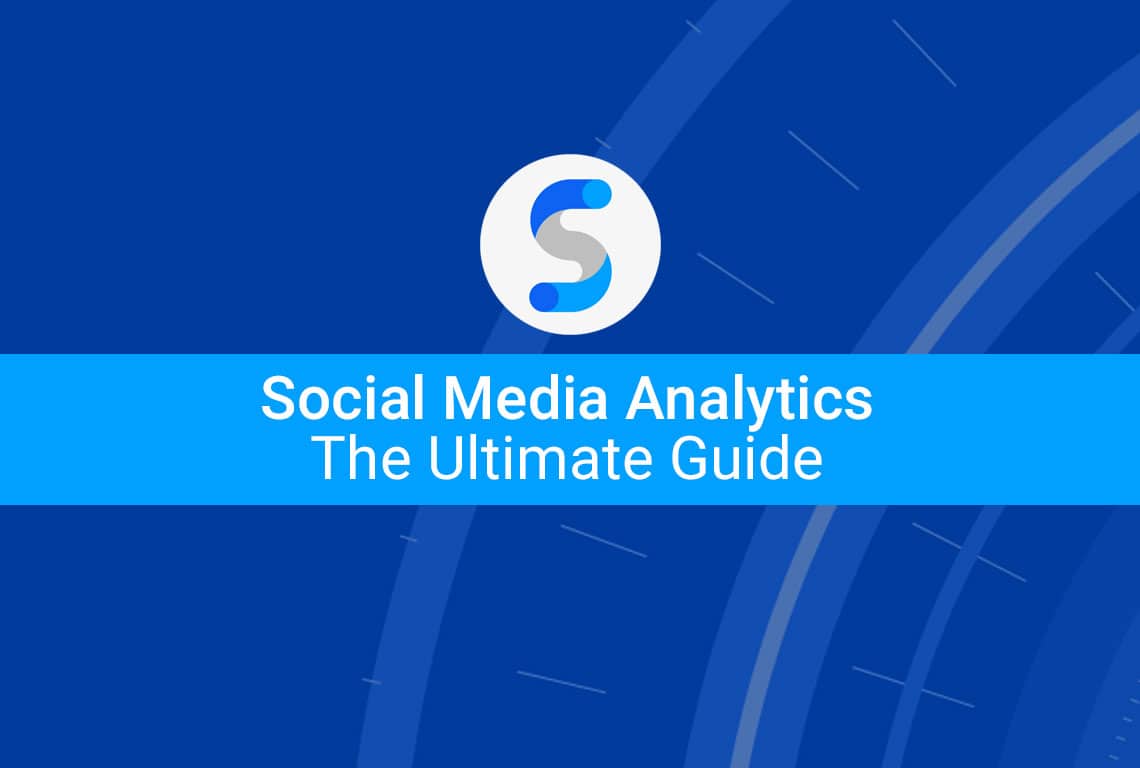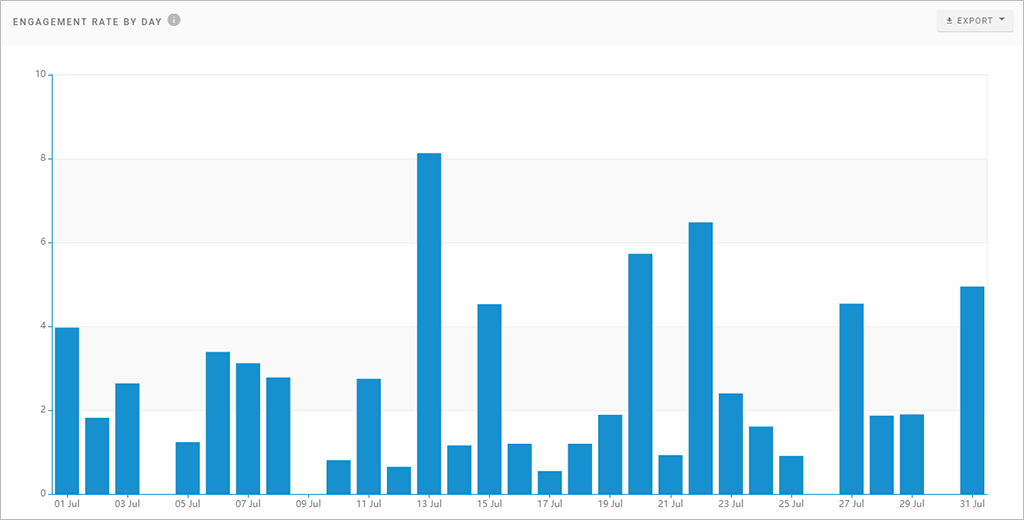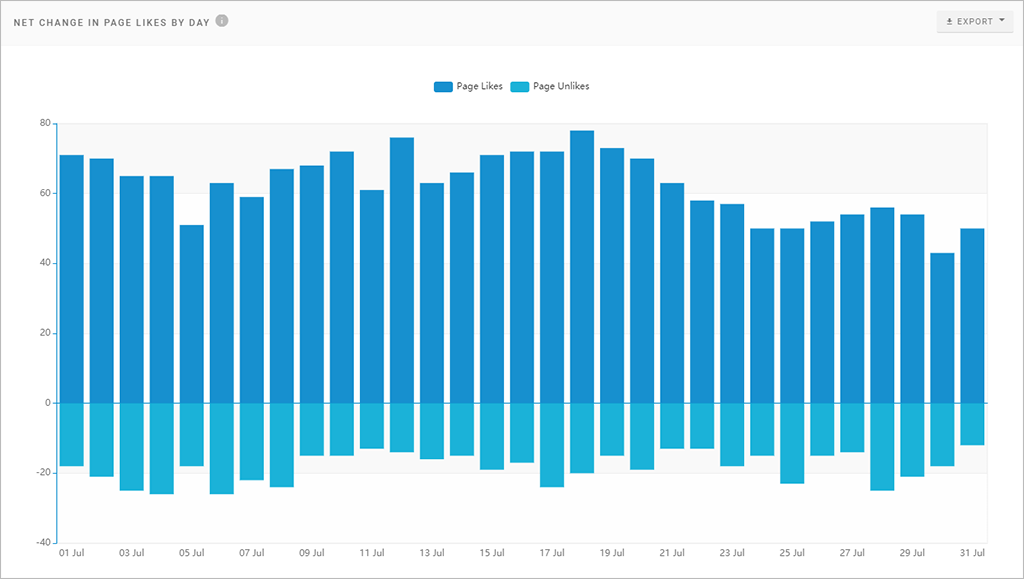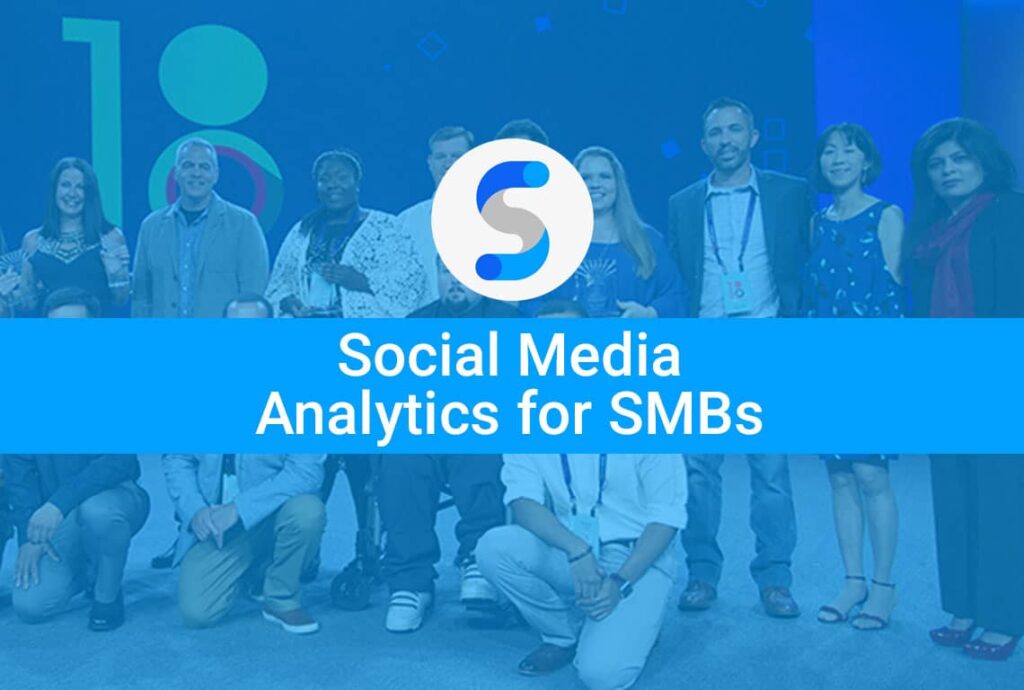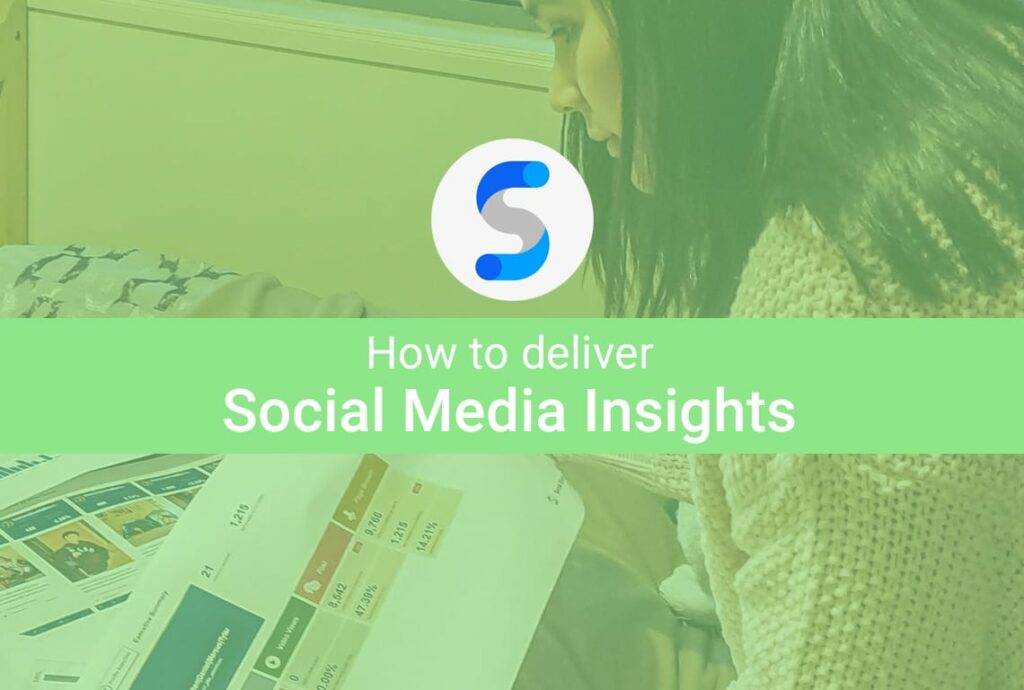What is social media analytics?
Social media analytics is the measurement and analysis of an organization’s own social media profiles, organic posts, paid posts and influencer posts.
There are two main reasons why you would conduct social media analytics:
- Assess Return on Investment (ROI): Communicate the performance of social media marketing activities to stakeholders or clients through social media reports
- Optimization: Find actionable insights for how to improve performance over time
When considering the first point of ROI, we must be mindful of the close relationship it has with the organization’s business objective on social media.
If your organization does not have a clearly defined objective for social media, then this is the first place you must start. All social media marketing activities must be executed to support and drive this objective. If there’s no objective, its not the end of the world – it just means you need to define it. Here are some typical objectives on social media:
- Reach a certain target demographic with messaging [top of funnel]
- Build engagement with audiences – ie: likes, comments, shares, video views
- Grow the page likes and followers
- Get traffic to the organization’s website
- Drive sales/conversions [bottom of funnel]
Whatever you set as the objective, there must be complete agreement with all stakeholders. Everyone must be 100% clear on what the social media objective is. Because everything you do from that point onwards must be designed to support and drive the objective.
Once you start creating content, publishing posts, managing the community, running ads, working with influencers, etc – you need a way to objectively assess how all of these activities are supporting and driving the business objective. This is where social media analytics come in.
How to assess social media metrics
Tessa Gray says it best:
A3: Benchmarks. No benchmarks = no meaning. #SMASChat
— tessa gray (@Tess_Bless) September 17, 2020
Benchmarks give you context around your metrics. If your average Engagement Rate on Instagram is 1.74% – is that good or bad? Without benchmarks, that’s an impossible question to answer. 1.74% might be fantastic in one industry and terrible in another industry. You must benchmark all your social metrics in order to assess their performance.
There are two types of benchmarking:
- Historical benchmarking: benchmark against your own performance over time (most popular is month over month)
- Competitor benchmarking: benchmark against competitors (or other social profiles that speak to the same kinds of audiences). Note that not all social metrics can be benchmarked competitively – more on that below
Organic social media analytics
Let’s start with social media analytics for organic (non-paid) social. Its best to look at both the absolute number as well as the related rate:
Impressions, Reach & Organic Reach Rate (ORR)
Sometimes used interchangeably, Impressions and Reach mean two different things.
Impressions are total views on content. Also referred to as “non-unique” views. Reach, on the other hand, refers to unique people. This means if 1 person views a single piece of content 3 times, Impressions would be 3 and Reach would be 1. Although this is simple to understand when dealing with 1 post, it gets complicated when looking at multiple posts.
For example, if you have 5 Facebook posts and each had 100 Impressions and Organic Reach of 50, the total Impressions on these posts would be 500 (5 x 100). However, you wouldn’t be able to say accurately that the Total Organic Reach is 250. It would likely be less than that. The reason you can’t simply multiply 5 x 50 is that Reach is a unique number and organically it is highly likely that some people will see multiple posts so you would end up double-counting them if you summed all the Organic Reach. For this reason, its not possible to report on Total Organic Reach across multiple posts. Unfortunately Facebook and the other social channels do not provide a Reach number “on-demand”. Instead, I suggest using Average Organic Reach per post or Facebook’s “28-Day Organic Reach” metric averaged across your reporting time interval. Its not perfect but its a good proxy.
Organic Reach Rate (ORR) is the percentage of people reached organically. At the post level, the ORR is calculated as the Organic Reach divided by the Page Likes (or Followers) multiplied by 100 to get a percentage. At the page or profile level, the ORR is the average of all ORRs on posts.
ORR is one of the most important metrics for helping decide if you should invest in paid social or not. If your ORR is single digits (under 10%), you have a strong business case for using paid support to increase the reach of your content. After all, what’s the point of investing time, energy and resources into content creation if only a small percentage of fans or followers are seeing the content? If you find your ORR is 20%, 30%, 40%, even higher – you’re well placed to rely on organic reach to fuel your social content distribution.
Impressions, Reach and ORR can only be benchmarked historically, not competitively since these metrics are only viewable by page or profile admins.
Video Views & Video View Rate (VVR)
Facebook, Instagram, Twitter, LinkedIn and Pinterest all count a Video View after 3 seconds. This means if a user is scrolling through their News Feed and a native video autoplays – it will count as a Video View if at least 3 seconds was visible on the screen. However, a Video View on YouTube isn’t as simple as a certain amount of seconds watched. YouTube has a sophisticated system for determining when a Video View has taken place. It takes several factors into account including the number of seconds watched, who watches it, their device and their watch history. YouTube’s methodology is essentially a black box.
Of those that were reach with videos, the Video View Rate (VVR) is the percentage of people who “watched”. At the post level, the VVR is the number of 3-sec Video Views divided by the Post Reach multiplied by 100 to get a percentage. At the page or profile level, the VVR is the average of all VVRs on video posts.
Video Views and VVR can only be benchmarked historically, not competitively. Except for YouTube which can be benchmarked competitively.
Engagements, Interactions & Engagement Rate (ER)
The term “Engagements” is usually used interchangeably with “Interactions” but again, these two metrics mean different things. While this is no common consensus among marketers, generally speaking, Engagements refer to every possible action that a user can take on a piece of content (both public and private actions) while Interactions refer only to the public actions. For this reason, Engagements are not able to be technically benchmarked competitively (due to the private actions like Link Clicks). To complicate matters, Engagements are obviously different for each social media channel. For example, Facebook Engagements are made up of no less than 8 metrics, while Instagram Engagements are made up of half that:
Facebook Engagements = Reactions + Comments + Shares + 3-sec Video Views + Clicks to Play + Photo Views + Link Clicks + Other Clicks
Facebook Interactions = Reactions + Comments + Shares
Instagram Engagements = Likes + Comments + Saves + 3-sec Video Views
Instagram Interactions = Likes + Comments
Twitter Engagements = Likes + Replies + Retweets + Media Views + URL Clicks + Profile Clicks
Twitter Interactions = Likes + Replies + Retweets
YouTube Engagements = Likes + Comments + Shares + Video Views
YouTube Interactions = Likes + Comments + Shares + Video Views
LinkedIn Engagements = Reactions + Comments + Shares + Video Views + Link Clicks
LinekdIn Interactions = Reactions + Comments
Pinterest Engagements = Comments + Repins + Video Views + Link Clicks
Pinterest Interactions = Comments + Repins
Of those that were reached, the Engagement Rate (ER) is the percentage of people who engaged with the content. At the post level, ER is the number of Engagements divided by the Post Reach multiplied by 100 to get a percentage. At the page or profile level, the ER is the average of all ERs on posts.
This method of calculating ER can only be benchmarked historically, not competitively (due to the inclusion of private metrics). However you can benchmark ER competitively by using Interactions instead of Engagements and if you substitute Reach with Page Likes, Followers or Subscribers. As an example for Facebook:
Facebook Post Engagement Rate = Interactions divided by Page Likes multiplied by 100
Net Change in Fans or Followers & Growth Rate (GR)
Growth is such a polarizing concept among social marketers. Some marketers don’t care about growth and don’t even track it. Whilst others have hard KPIs on growth and run specific community growth campaigns. There’s no right or wrong approach here. It all comes down to your stakeholders and their objectives. Personally, I feel the importance of community growth is dependant on the channel. Increasingly it seems the number of Page Likes is becoming less relevant on Facebook for a number of reasons:
- Users tend not to seek out and visit a Facebook Page unless they have a specific question (eg: opening hours) or they want to message the page
- With more marketers relying on paid reach, it makes the number of Fans less important. You may even find that Fans aren’t as cost-effective to reach or engage when compared with other audiences (especially Custom Audiences)
- In the past, communities were acquired in sometimes less authentic ways like competitions giving away unrelated prizes or worst: buying fake fans
However on a channel like Instagram, its fair to say Follower counts are more important (for some brands) because:
- Users are more likely to visit brand profiles on Instagram – this behavior is just more prevalent than on Facebook
- The Follower count is in bold at the top of the profile which makes it more visually prominent
- Instagram is built on concepts like “influence” and “social equity”. While these typically relate to people, they also relate to brands. So if a brand has a “low” amot of followers there must be something wrong with it right?
Wherever you stand on this issue will depend on your brand, industry and stakeholders but for the purposes of measurement, you’ll likely be tracking Net Change in Fans or Followers and Growth Rate (GR). The Net Change is the amount of new Fans or Followers minus the amount of Unlikes or Unfollows in any given time period such as a month.
GR indicates the rate of change and is typically calculated at the monthly time interval as (Number of Fans on the last day of the month minus Number of Fans on the first day of the month) divided by Number of Fans on the first day of the month multiplied by 100 to get a percentage.
Link Clicks & Click Through Rate (CTR)
Link Clicks are clicks on URLs or “link cards”. This is a significant action because the user is taking the time to leave the News Feed and visit your site.
Of those who were reached with post containing links, the Click Through Rate (CTR) is the percentage of people who clicked on links. At the post level, the CTR is the number of Link Clicks divided by the Post Reach multiplied by 100 to get a percentage. At the page or profile level, the CTR is the average of all CTRs on posts with links.
Link Clicks and CTR can only be benchmarked historically, not competitively as Link Clicks are a private metric.
You’ll find all these metrics for the social profiles you manage in Profile Analytics.
